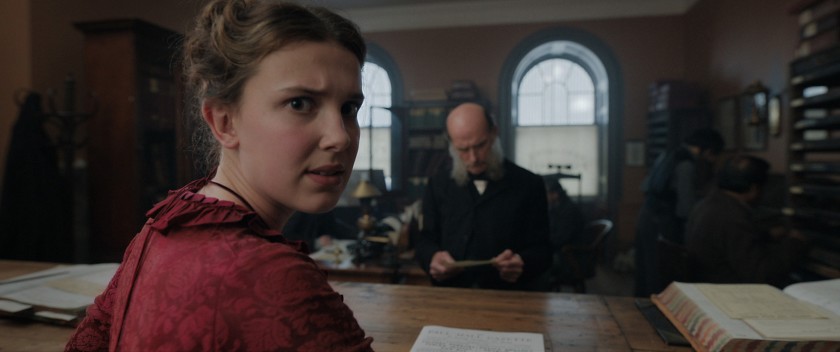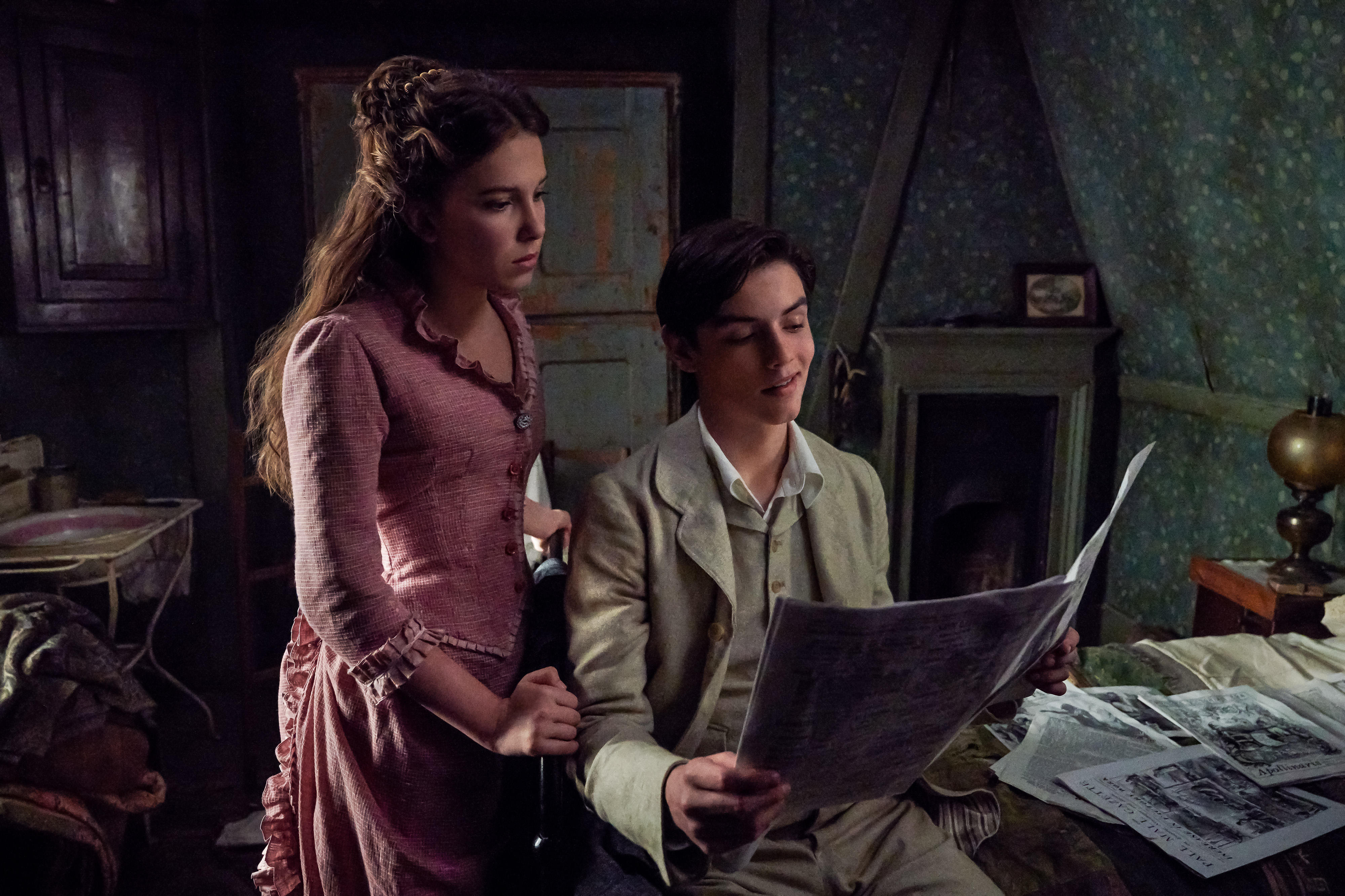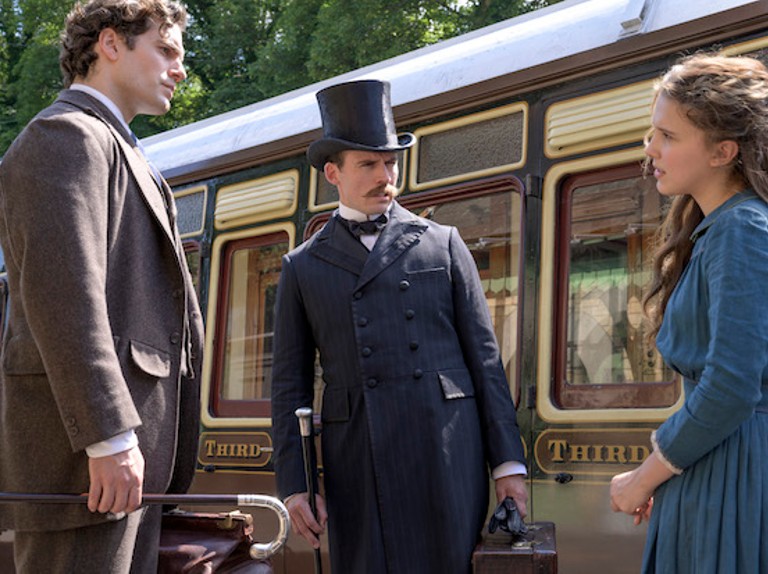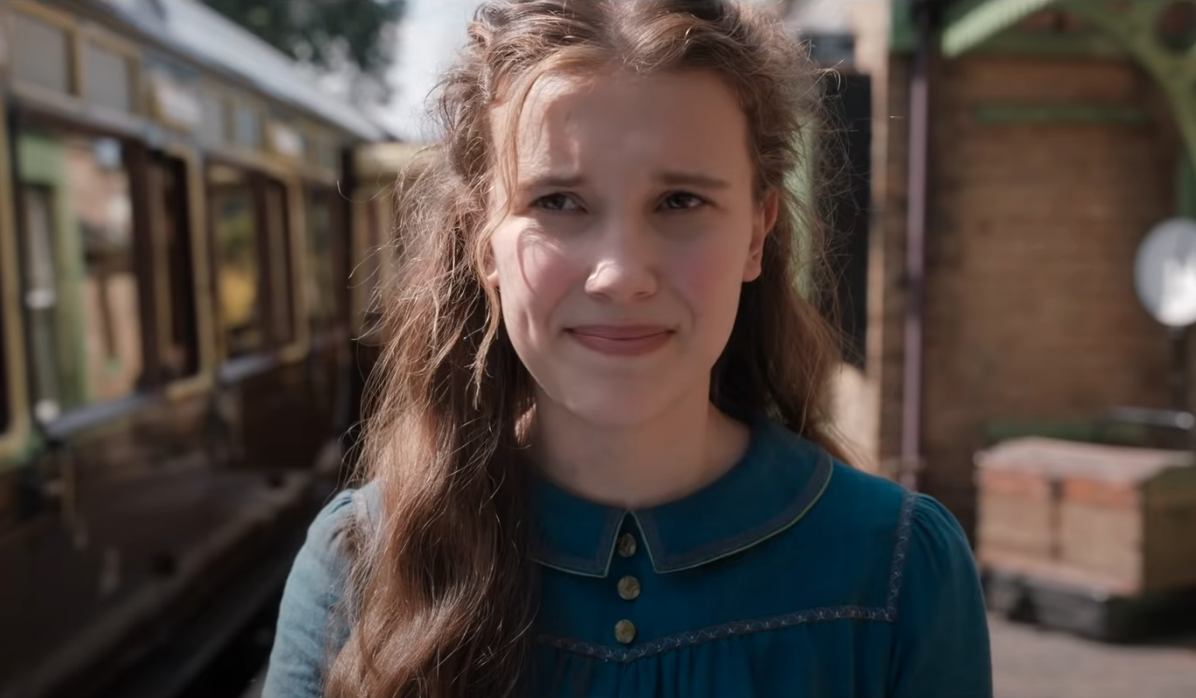Millie Bobby Brown has been earning raves since the earliest days of Stranger Things, where she plays the telekinetic teenager known as Eleven. If there was anyone who didn’t immediately recognise her star power, that could be because she spent those early days looking at the world with timid doe eyes, broken up by occasional eruptions of rage. By the third season she really started smiling, at which point, her charisma manifested as a physical force that radiated off her for all to see, and few to resist.
That’s the Brown we get, only more so, in Enola Holmes, the new detective adventure set in the world of Sherlock Holmes, from her friends at Netflix, which also created Stranger Things. By giving us a light diversion that is purposeful about its sense of fun, Netflix has now weaponised Brown’s charisma. When she turns to the audience to break the fourth wall with a conspiratorial glance, you are practically inclined to blush.
The movie around Brown is quite enjoyable, but could probably never equal the special talents she brings to the table. Her title character is the 16-year-old sister of Sherlock (Henry Cavill) and Mycroft (Sam Claflin) Holmes, though she never appeared in the pages of Sir Arthur Conan Doyle’s novels. Instead, the junior detective is the creation of Nancy Springer, who has written a series of young adult detective novels starring Enola as a specialist in missing persons cases. Enola is 20 years younger than her brothers, who are more interested in locking her away in a finishing school for girls so she doesn’t trifle with the family’s reputation. The young proto-feminist has larger scale ambitions on her mind – and who could blame her with a famous brother like Sherlock, and a mother (Helena Bonham Carter) who taught her to fight and to decipher word puzzles.
The first of what Netflix undoubtedly envisions as a series finds Enola coming into her powers. Spurring her into action is the disappearance of her mother, who has left clues how to find her, which lead her to London. On the way she encounters a teenage marquess, Lord Tewksbury (Louis Partridge), who is in trouble from the jump. He’s on that train to escape his own restrictive life, but also something more literal he is not yet aware of – a man in a bowler cap (Burn Gorman) trying to kill him. Enola isn’t inclined to become entangled with him, but she also recognises the green young man has no hope of surviving without her.
Harry Bradbeer’s film, from a script by Jack Thorne, is purposeful about its fun, but not its plotting. The story has a number of circumlocutions that prevent it from getting where it’s going with any sort of determination. They stretch the running time to over two hours, when a 90-minute package might have been a more effective delivery system for this material – especially as it is meant for children a few years younger than Brown, whose attention spans are notoriously deficient.
Still, Enola Holmes is incredibly comfortable in its chosen mode. If this is intended as series of movies – and Springer gave us six novels, which is to say nothing of the original material that could be written – then this first can be largely about spending time with Enola and getting to know her. That’s something of a gamble, as they cannot make more movies if fans don’t love the first one, but it’s less so with someone like Brown inhabiting the screen. She provides something for everyone in this role, dressing as boys on several occasions to more closely approximate the head-shaven, asexual mode in which we first met her in Stranger Things, but she also spends time in corsets and other Victorian garb, with the flowing locks to match. In all modes she has spunk and joie de vivre to spare.
The function of Sherlock and Mycroft Holmes is a bit more opaque. To be sure, the film does not want to make Sherlock a very active participant in Enola’s sleuthing, because this should be about her deductive reasoning, not his. He does pop up now and again in the same locations she does, having followed with relative ease the same clues Enola struggled with. That’s of course a function of him being many years into an unparalleled career as a detective. But the filmmakers are careful to ensure that this is not just Sherlock saving Enola from the fixes she gets herself into, and in fact, Enola does a lot more saving of the marquess than anyone saves her. Mycroft, on the other hand, is just a miserable, impatient SOB concerned about enforcing on Enola the status quo for women in society.
Enola Holmes has a resplendent production design and quite a sense of narrative playfulness. Not only is there the conceit where Enola regularly takes the audience into her confidence, but other information is conveyed in a similarly spritely manner. For example, when she gives us a breakdown of who lives at the estate of the marquess, the characters pop up on screen in two-dimensional yellowed photographs from the era, one at a time, until the screen is finally filled with the hundred servants who minister to them. Techniques like these keep the tone firmly in place, even when the story wanders away from the point A to B to C progression of an ordinary investigation.
Netflix probably does have something reproducible here. Even if viewers don’t watch Enola Holmes in healthy numbers – we’ll never know unless they choose to tell us – the property is worth expanding to a second movie at least. The world of Sherlock Holmes has always been fertile cinematic ground, and Brown does all Netflix could ever hope to bring it to a younger and more female audience.



